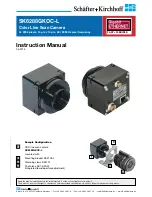
16
A. The lens is focused on the subject by rotating the focusing ring in
either direction, while checking the effect on the microprism/split-
image range finder spot in the center of the focusing screen.
B. The central split-image spots splits the image into two, with the
upper and lower halves separated horizontally when the lens is out of
focus. When in focus, however, the two halves will coincide with the
displacement disappearing. The microprism ring surrounding the
central spot can also be used for checking the sharpness of the
focused image. The image will glitter when the lens is not focused.
The surrounding full-area matte surface can also be used for checking
overall image sharpness.
A. Distance scales on the Zenzanon PS lenses can be used for focus-
ing at the required distance or finding the distance actually focused.
Simply rotate the focusing ring and set the required distance oppo-
site the orange-colored index to focus on a required distance.
B. There is an apparent zone of sharpness, the depth of field, both in
front and back of the focused subject. The depth-of-field scale shows
the zone of apparent sharpness at any lens opening or distance and
can be utilized for ascertaining the depth of field. The depth-of-field
scale is located next to the distance scales and is made up of identical
pairs of apertures on both sides of the orange-colored distance index.
18. Focusing Adjustments
19. Distance Scale and Depth-of-Field Scale









































